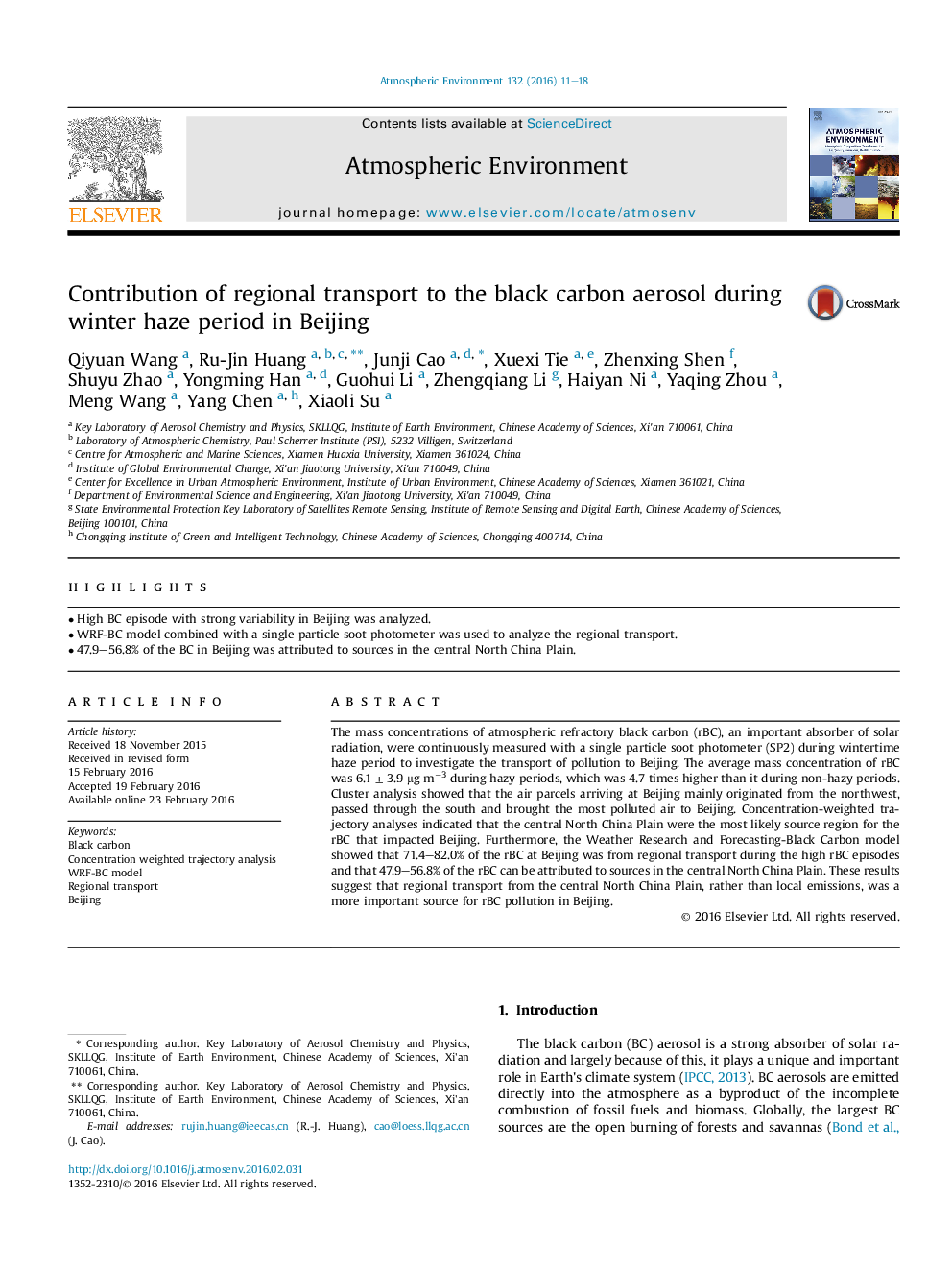| Article ID | Journal | Published Year | Pages | File Type |
|---|---|---|---|---|
| 6336347 | Atmospheric Environment | 2016 | 8 Pages |
Abstract
The mass concentrations of atmospheric refractory black carbon (rBC), an important absorber of solar radiation, were continuously measured with a single particle soot photometer (SP2) during wintertime haze period to investigate the transport of pollution to Beijing. The average mass concentration of rBC was 6.1 ± 3.9 μg mâ3 during hazy periods, which was 4.7 times higher than it during non-hazy periods. Cluster analysis showed that the air parcels arriving at Beijing mainly originated from the northwest, passed through the south and brought the most polluted air to Beijing. Concentration-weighted trajectory analyses indicated that the central North China Plain were the most likely source region for the rBC that impacted Beijing. Furthermore, the Weather Research and Forecasting-Black Carbon model showed that 71.4-82.0% of the rBC at Beijing was from regional transport during the high rBC episodes and that 47.9-56.8% of the rBC can be attributed to sources in the central North China Plain. These results suggest that regional transport from the central North China Plain, rather than local emissions, was a more important source for rBC pollution in Beijing.
Related Topics
Physical Sciences and Engineering
Earth and Planetary Sciences
Atmospheric Science
Authors
Qiyuan Wang, Ru-Jin Huang, Junji Cao, Xuexi Tie, Zhenxing Shen, Shuyu Zhao, Yongming Han, Guohui Li, Zhengqiang Li, Haiyan Ni, Yaqing Zhou, Meng Wang, Yang Chen, Xiaoli Su,
